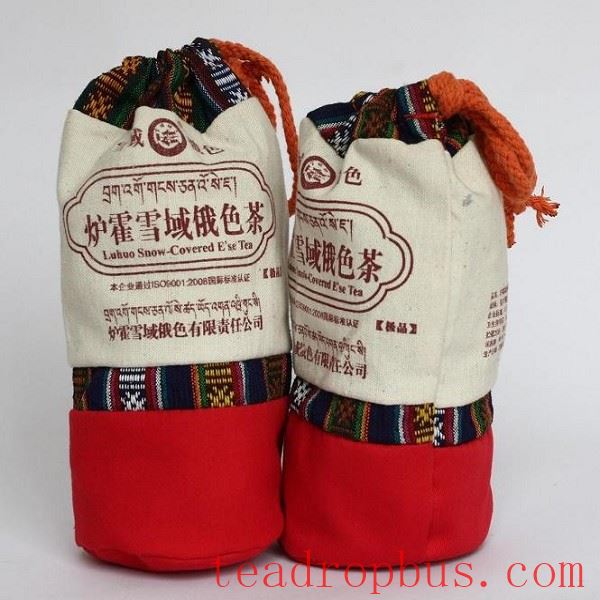
Basic Introduction to Rutho Snowland Rusetea
“Rutho Snowland Rusetea” is produced in the Holzhang Valley region of Luhuo County, Garze Tibetan Autonomous Prefecture, Sichuan Province, located on the southeastern edge of the Qinghai-Tibet Plateau. The Rusetea tree grows in a completely pollution-free environment and is a unique and rare tree species native to the snow-covered highlands. For a long time, “Rusetea (Hol Ancient Tibetan Tea)” has been served exclusively for receiving VIPs, festive occasions, and reserved for the consumption of local chieftains, living Buddhas, and aristocratic classes in Tibetan areas. Its miraculous medicinal effects are recorded in the most authoritative Tibetan medical text, “The Four Medical Classics.” In October 2010, after review by the General Administration of Quality Supervision, Inspection, and Quarantine of China, it was decided to provide national geographical indication product protection for “Snowland Rusetea.”
Nutritional Value
Modern pharmacological research has proven that the effective components of Rusetea leaves and buds made into “Rusetea (Hol Ancient Tibetan Tea)” are natural constituents of food, serving as an excellent natural antioxidant. It has the effect of controlling blood pressure, lowering lipids and blood Sugar, with no toxic side effects, making it safe for consumption. It has a remarkable preventive effect on “three highs” (high blood pressure, high cholesterol, and high blood sugar), diabetes, obesity, and other conditions.
Product Characteristics
In early 2005, the Luhuo County Forestry Bureau and Forestry Development Corporation hired scientific researchers to utilize the first flush of young buds from the Snowland Rusetea trees growing at an altitude of 3,000 to 3,500 meters. Based on the medicinal efficacy and pharmacology of the Snowland Rusetea leaves, they developed a pure, natural series of Snowland Rusetea through preliminary trials and intermediate-scale testing. By October 2005, they successfully developed the pure, natural series of Snowland Rusetea. Test results from the Ministry of Agriculture's Food Quality Supervision, Inspection, and Testing Center (Chengdu) showed that the content of various nutrients needed by the human body in Malus sikkimensis (the raw material for making “Rusetea (Hol Ancient Tibetan Tea)”) is abundant.
The Research Group of the Snowland Rusetea Project of the Institute of Minority Medicinal Plants of Southwest University for Nationalities commissioned the Institute of Natural Products of China Three Gorges University and Hubei Province Key Laboratory in 2006, and the Analysis and Testing Center of the West China School of Public Health of Sichuan University in 2008, to conduct health food efficacy experiments on lipid-lowering and blood sugar-lowering effects of Rusetea and its extracts. The experimental results showed that Snowland Rusetea has the effect of lowering blood lipids, blood sugar, and blood pressure.
Historical and Folk Customs
“Rutho Snowland Rusetea” is produced in the Holzhang Valley region of Luhuo County, Garze Tibetan Autonomous Prefecture, Sichuan Province, located on the southeastern edge of the Qinghai-Tibet Plateau. The Rusetea tree grows in a completely pollution-free environment and is a unique and rare tree species native to the snow-covered highlands. In the Holzhang Valley region, many trees have reached ages of hundreds or even several hundred years.
For a long time, “Rusetea (Hol Ancient Tibetan Tea)” has been served exclusively for receiving VIPs, festive occasions, and reserved for the consumption of local chieftains, living Buddhas, and aristocratic classes in Tibetan areas. Its miraculous medicinal effects are recorded in the most authoritative Tibetan medical text, “The Four Medical Classics.”
Production Method of Rutho Snowland Rusetea
Fresh leaf picking.
1. Picking Time: Mid-April to late June each year.
2. Picking Requirements: Fresh leaves must not have diseased leaves, purple leaves, or red leaves.
(1) Top Grade: Primarily young buds, with whole buds ≥ 90%.
(2) Superior Grade: First flush of one bud and one leaf ≥ 70%.
(3) First Grade: First flush of one bud and two leaves ≥ 50%.
Processing Technology.
Fresh leaves → Withering → Fixation → Initial rolling → Drying (or stir-frying) second green → Re-rolling and shaping → Stir-frying third green → Drying (final firing).
Awards and Honors
In October 2010, after review by the General Administration of Quality Supervision, Inspection, and Quarantine of China, it was decided to provide national geographical indication product protection for “Snowland Rusetea.”